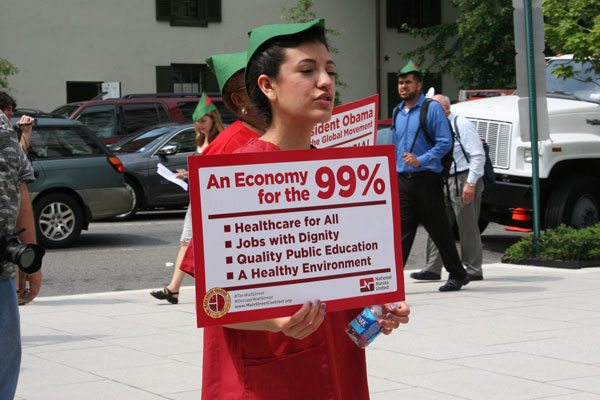
October 25, 2017; Politico, PHI
Every day, 10,000 baby boomers turn 65. As millions of boomers move into the final decades of their lives, we face a significant challenge as a nation: who will care for them? Already, home care is among the nation’s fastest-growing jobs, creating more new jobs than any other single occupation. According to a new fact sheet from PHI, over 633,000 new home care aides will be needed in the next decade, double the number of retail salespersons.
Demographic shifts suggest that there simply won’t be enough working-age people to fill these jobs. To supplement that labor, we will need women from around the world who come to the United States in search of safety and economic opportunity for themselves and their families. Yet, the current administration is determined to reduce the flow of immigrants, particularly those without wealth or education.
Compared to earlier generations, Baby Boomers had relatively small families, changing the age distribution of our country. A look at the numbers makes it clear why boomers should be advocating for sensible immigration policies that will expand and stabilize the caregiving workforce.
Between 2015 and 2050, the population of adults over the age of 65 will grow from about 48 million to 88 million. Those over 85—and in need of the most care—will triple in number from just over six million to 19 million. During that same time period, there will be virtually no growth in the population of working-age adults, ages 18-64. Either we will need a massive shift of workers into caregiving occupations—unlikely considering these are some of the nation’s worst paying and most difficult jobs—or we will need new workers from countries around the world.
Sign up for our free newsletters
Subscribe to NPQ's newsletters to have our top stories delivered directly to your inbox.
By signing up, you agree to our privacy policy and terms of use, and to receive messages from NPQ and our partners.
Immigrants make up nearly 30 percent of the home care workforce, according to PHI. Paul Osterman, author of Who Will Care for Us?, explains, “If immigration is restricted people will have a much harder time finding the help they need to stay at home.”
The latest immigration proposal from the GOP, the Reforming American Immigration for Strong Employment (RAISE) Act, would reduce the flow of legal immigrants by about half. Moreover, it shifts priorities in terms of who will be welcome in the US. According to a recent story in NPQ, the RAISE Act “gives wealthy, highly educated, English-speaking applicants priority over those seeking to reunite with family (called chain migration).”
Unfortunately for older Americans, it is low-income women without formal educations who seek employment as caregivers. The field has a low bar for entry: it doesn’t require a high school or college degree, workers do not need to be fluent in English, and many of the jobs have no training or certification requirements. For foreign-born workers who are more highly educated—for example, nurses—home care and certified nursing aide jobs are often a first step toward a healthcare career in the US.
If we reduce the flow of immigrant labor, one would think that wages for home care workers would rise as demand grows. Anupam Jena, associate professor of health care policy at Harvard Medical School, told reporter Ted Hesson, who recently reported on the growing care gap for Politico. “How much would it drive up the prices? That’s hard to know.” The home care market, however, is not a classic “free market.” Nearly 70 percent of home care services are paid for through public dollars, both Medicaid and Medicare. Medicaid, in particular, is facing steep cuts, putting increased pressure on states to reduce costs for long-term services and supports. More likely, rather than higher wages, we are going to see far more people seeking informal help from family members who are already stretched thin by the demands of work and family.—Karen Kahn











